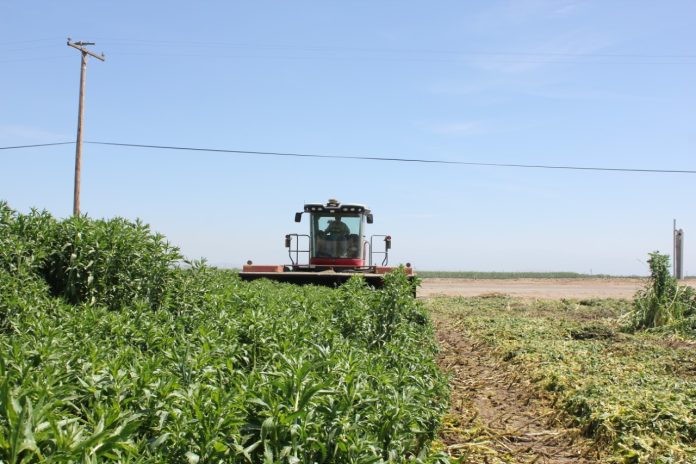

Continued studies suggest that safflower grown as a winter forage for dairy cows in the San Joaquin Valley has benefits in water savings and recovery of nutrients.
Stephen Kaffka, director of the California Biomass Collaborative and UCCE specialist in the Department of Plant Sciences at UC Davis, said safflower has value as a silage when harvested in the vegetative stage in early spring following November planting. Studies at dairies were completed to determine if the crop has potential as a low-input, high-biomass cattle feed.
While there are some challenges with harvesting and ensiling this crop, it produces large amounts of forage dry matter per acre while requiring very little irrigation water.
Winter planted safflower allows for high water use efficiency and, as it is a very deep-rooted crop, recovers nutrients and water left behind by shallow-rooted crops. An initial study at the UC Davis campus funded by the California Dairy Research Foundation and co-sponsors Nestles and Hilmar Cheese found that safflower used less than 1.5 acre-feet of water (af) from all sources to produce nearly six tons of dry matter biomass per acre by harvest at the end of April. Two studies completed on dairy farms in the southern San Joaquin Valley in 2021 with early April-harvested safflower measured less than one af of irrigation water and similar levels of forage dry matter yield.
Soil water depletion to six feet in the soil profile was documented by researchers in the dairy studies. Most nitrate uptake occurred in the upper portion of the soil profile where roots are denser. Most comparable crops are limited to four to six feet in the soil profile.
Kaffka and UC Davis Dairy Nutritionist Peter Robinson reported that safflower silage was comparable in feed quality to cereal silages made from triticale and wheat, which are typically planted and harvested during the same time period. Safflower silage stores well and was stable over a six-month storage and feedout period, and it did not accumulate nitrate to excess or result in harmful silage gas production under study conditions.
Due to the high moisture content of fall-planted safflower, harvest and drying of the crop posed challenges. Due to harvest in early spring, drying was slow, and forage must be left in wide windrows to achieve sufficiently low moisture for effective silage fermentation. Robinson and Kaffka said limited levels of irrigation, different row spacings, seeding densities and planting dates are included in a current study.




















